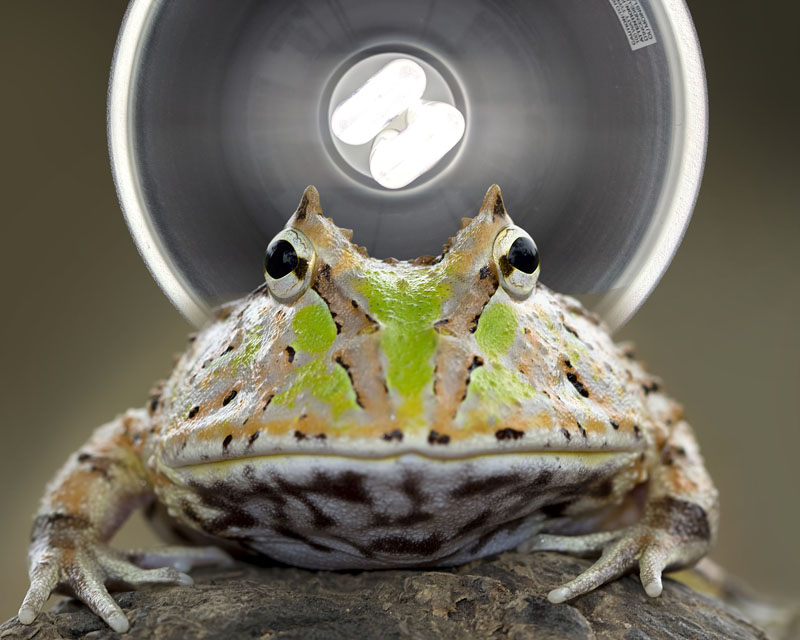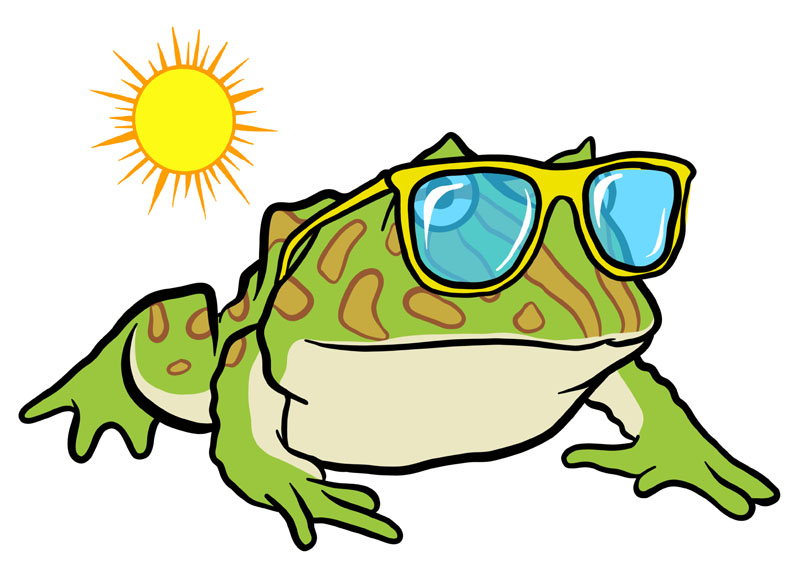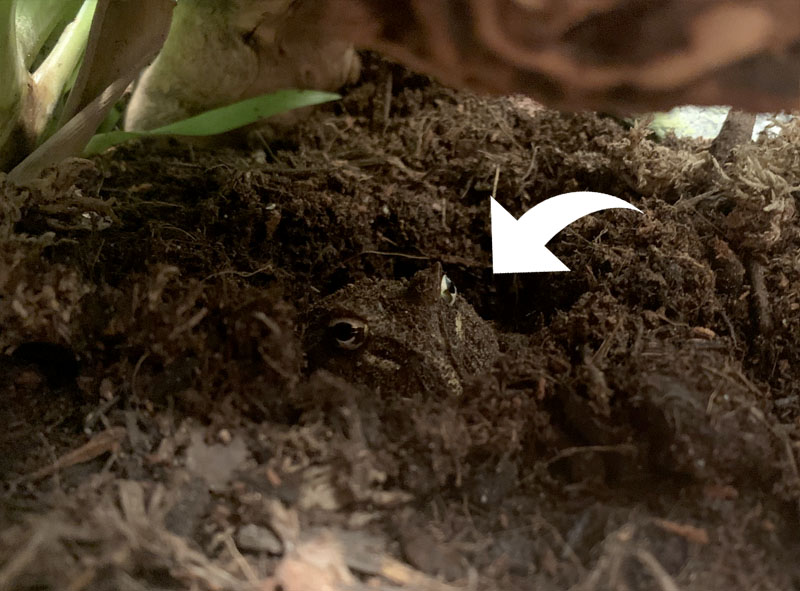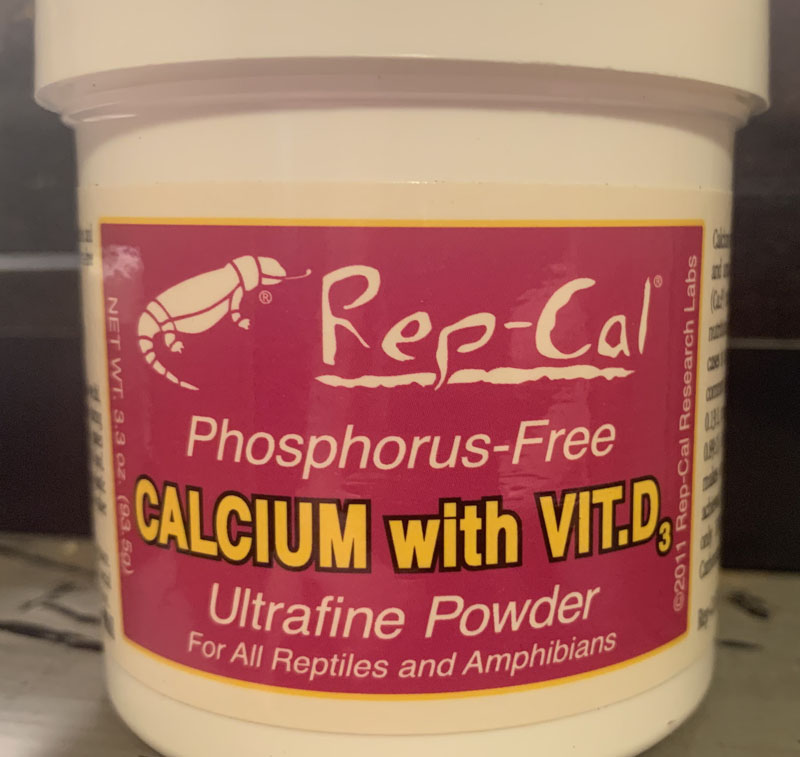Do Pacman Frogs Need UVB?

Whether you’re preparing to buy a Pacman frog or you already have one, it’s good to know their lighting requirements. More specifically, it’s good to know whether or not they need UVB lighting, which is required for some reptiles and amphibians in captivity.
Exposure to UVB allows reptiles and amphibians the ability to regulate vitamin D3, which helps them absorb calcium. Without vitamin D3, they’re prone to MBD (metabolic bone disease). Regardless, that doesn’t mean UVB bulbs are required or even recommended.
Continue reading to learn why UVB isn’t required but how it is beneficial to a Pacman Frog’s health.
UVB for Amphibians
The debate on whether or not amphibians and reptiles need UVB is becoming a thing of the past. This is all thanks to a handful of recent studies which strongly suggest UVB is a vital part of their well-being.

Most of these studies are geared towards the most popular reptile species; bearded dragons, leopard geckos, chameleons, etc. But what about amphibians? What do the studies reveal about UVB for them? They’re certainly more delicate than their scaly counterparts.
While we’re still lacking in scientific evidence, it’s believed that amphibians have the same vitamin D3 and metabolic processes as other vertebrates [1].
This doesn’t mean you should rush out and purchase a high-powered UVB bulb for your precious Pacman Frog. In fact, this can be quite harmful. You don’t want to overdo it! There is a method to providing an acceptable amount of UVB, however. I’ll get to that soon.
It’s also important to note that some research suggests increased UVB is to blame for the recent decline in amphibian populations around the world [2]. This study is mostly geared towards increased UVB levels and tadpoles. Regardless of this study, most experts tend to agree that the proper levels of UVB are beneficial to amphibians.
Finally, it’s worth mentioning that I’ve read claims of UVB being harmful to albino Pacman Frogs. While I was unable to find a credible source, it’s not too far-fetched. There are many studies showing how species with albinism are at greater risk of danger from UV light.
What does it all mean? In short, the correct levels of UVI (UV Index) can benefit amphibians. The correct UVB bulb and distance from the frog are important in achieving the optimal levels. But don’t use UVB lights if you have an albino Pacman Frog!
Ferguson Zones
Determining the optimal UVB setup for a Pacman Frog begins with knowing its “Ferguson zone”. A Ferguson zone is a range of UV Indexes. There are 4 Ferguson zones and all reptile and amphibians fall into one of the four zones.
Professor Gary Ferguson and a team of herpetologists from Texas Christian University studied many species of reptiles and found that all of them could be categorized into one of the “zones” or microhabitats. The findings were based on the UV exposure of reptiles in the wild. The zones are listed below with their respective UVI ranges.
| Zone # | Average UVI | Max UVI |
|---|---|---|
| 1 | 0.0 – 0.7 | 0.6 – 1.4 |
| 2 | 0.7 – 1.0 | 1.1 – 3.0 |
| 3 | 1.0 – 2.6 | 2.9 – 7.4 |
| 4 | 2.6 – 3.5 | 4.5 – 9.5 |
The Journal of Zoo and Aquarium Research published an incredibly helpful guide on lighting for reptiles and amphibians in captivity [3]. Click here for the PDF.
Ferguson zone 1 is comprised of crepuscular or shade dwelling species. They’re the types that come out at night or spend most of their time hidden away from sunlight.
Pacman Frogs and Sunlight
Pacman Frogs spend the majority of their time burrowed into the substrate and under leaf litter in tropical and subtropical broadleaf forests. The sunlight that does manage to reach them is first scattered through a thick jungle canopy.
On top of that, they’re usually buried up to their eyes in soil, moss, or leaf litter. Why? Because they’re ambush predators. They burrow into the substrate and wait for prey to walk by. Pacman Frogs spend most of their lives shielded from nearly all UV light. Hence the reason they fall into Ferguson zone 1.

So, if you’re anything like me, you’re probably wondering how to achieve the optimal lighting for a reptile or amphibian in Ferguson zone #1. I’ll explain that in the section below.
UVB bulbs (and placement) for Pacman Frogs in Captivity
You may remember the opening paragraphs of this page where I explained that UVB isn’t a requirement. I stand by that statement. However, because Pacman Frogs can benefit from UVB lighting when done properly, I’m going to show you how.
We learned earlier that the average UVI for Ferguson zone #1 is between 0.0 – 0.7 UVI. In order to obtain this range in UVI, you have to select a specific UVB bulb and place it the correct distance away from your frog. By the time the UV reaches your frog, the UVI should be within the correct range of 0.0 – 0.7.
Here are some popular bulbs and the distances you should place them in order to obtain the recommended 0.0 – 0.7 UVI for Ferguson zone 1 species.
| UVB Bulb | Distance | UVB |
|---|---|---|
| ReptiSun 5.0 Mini CFL | 10″ | 5.0 |
| ReptiSun 5.0 CFL | 16″ | 5.0 |
| ReptiSun 5.0 T8 Linear | 16″ | 5.0 |
| ReptiSun 5.0 T5 Linear | 22″ | 5.0 |
These distances are rated for bulbs that are not being used with a reflector! Reflectors intensify the UVI. Zoo Med has a helpful PDF that shows the distances of 12 of their bulbs, ranging from 5.0 to 10.0 UVB.
In addition to this, you can buy a UV Index Meter (click here to see on Amazon) to measure the UVI levels within the enclosure. Unfortunately, they’re very expensive. It’s okay to use the Zoo Med PDF or the table above to find the right bulb and distance for your setup! That’s what I do.
Recap: Evidence suggests that amphibians benefit from UVB. While it’s technically not a requirement, providing UVB within the range of Ferguson zone 1 will likely benefit the health of your non-albino Pacman Frog.
About to get a Pacman Frog? Check out my step-by-step guide on setting up a Pacman Frog tank!
Alright, now that you know how to set up UVB lighting for your frog, I’ll explain why it’s not a requirement.
Pacman Frogs Need Calcium Supplements with Vitamin D3
Wild Pacman Frogs have access to a variety of healthy insects like spiders, worms, crickets, flies, butterflies, small fish, and so on. This large assortment of food keeps them healthy. In captivity, however, your frog’s options are very limited.
In short, captive Pacman Frogs only have access to what’s available in pet stores and what you’re able to cultivate on your own. Most of the time, these food sources are lacking in nutritional value.
This is why so many hobbyists recommend gut-loading feeder insects and dusting them with calcium and vitamin supplements before feeding them to your pet(s)!
Amphibians need vitamin D3 to help absorb calcium. So, what does this have to do with UVB? Well, UVB is not required because you will be dusting your Pacman Frog’s feeder insects with a supplement containing calcium and vitamin D3.

Day & Night Cycle for Pacman Frogs in Captivity
Last but certainly not least, Pacman Frogs need a consistent day and night cycle! Just because a UVB bulb is not required that doesn’t mean you won’t need a light whatsoever.
This largely depends on the room in which you keep your frog. If you have the tank in a well-lit room with lots of natural lighting from windows, you might not need supplemental light. If, on the other hand, your Pacman Frog’s tank is in a basement with no windows, you need a light.
Even in a well-lit room with lots of windows, it’s still a good idea to use supplemental lighting. It comes in handy during the winter months when the length of daytime shrinks in comparison to the summer months. It all depends on your situation.
TLDR; Do Pacman Frogs Need UVB or Not?
Pacman Frogs need vitamin D3 to help them absorb calcium. Without it, they may develop MBD (Metabolic Bone Disease). Evidence suggests that UVB helps amphibians regulate vitamin D3. However, Pacman Frogs don’t need UVB in captivity so long as you’re dusting their feeder insects with a calcium + vitamin D3 supplement like Rep-Cal (click here to see it on Amazon).
Still, the correct amount of UVB is believed to be beneficial to amphibians. Professor Ferguson, a renowned herpetologist, created a method for categorizing species into one of four “zones”. In short, these zones are based on the amount of UVI (UV Index) reptiles and amphibians receive in the wild.
Pacman Frogs fall into Ferguson zone 1 because they’re shade-dwellers. In this zone, the average UVI is between 0.0 – 0.7. You can achieve this UVI by using certain UVB bulbs placed at the correct distance away from your pet! There is a chart linked in the “UVB Bulbs” section in the main part of this post.
By the way, check out my guide on caring for Pacman Frogs for more information about keeping them in captivity!
References
- Antwis, R., & Browne, R. (2009). Ultraviolet radiation and Vitamin D3 in amphibian health, behaviour, diet and conservation. Comparative Biochemistry and Physiology Part A: Molecular & Integrative Physiology, 154(2), 184–190. https://doi.org/10.1016/j.cbpa.2009.06.008[↩]
- Ceccato, E., Cramp, R. L., Seebacher, F., & Franklin, C. E. (2016). Early exposure to ultraviolet-B radiation decreases immune function later in life. Conservation Physiology, 4(1), cow037. https://doi.org/10.1093/conphys/cow037[↩]
- Baines, F. M. (2016, January 31). How much UVB does my reptile need? The UV-Tool, a guide to the selection of UV lighting for reptiles and amphibians in captivity. | Journal of Zoo and Aquarium Research. The Journal of Zoo and Aquarium Research. https://www.jzar.org/jzar/article/view/150[↩]
